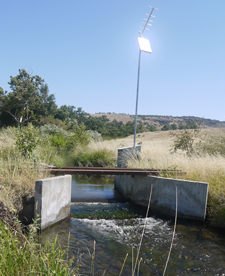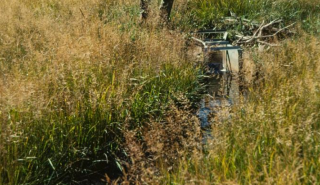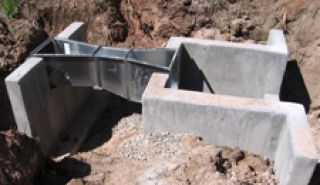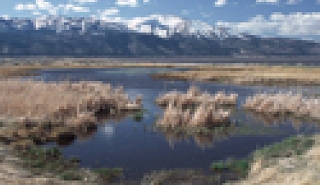 Flumes are a common way to measuring water rights / irrigations flows on farms and ranches.
Flumes are a common way to measuring water rights / irrigations flows on farms and ranches.
While researchers may use flumes in edge-of-field applications to monitor erosion, runoff, and nutrient loss, the day-to-day ag user is interested in water rights and irrigation flows. Ag users rely on flumes to measure their flows due to their accuracy, ability to pass sediments and solids, small head loss (compared to weirs), and range of materials.
Accuracy
In a properly installed system, a flume should provide a total system accuracy of +/-8-10% (meeting or exceeding CA SB 88). This is regardless of flume type (Parshall / Cutthroat / etc.).
Ability to Pass Solids
Flumes are a superior choice when the passage of sediments is a concern. The flumes most commonly used in ag installations – the Parshall and the Cutthroat – have flat or downward sloping floors (Cutthroat flat – Parshall sloping) meaning that they pass solids well.
Weirs by contrast must be set ABOVE the floor of the channel to create the proper weir pool. This means that overtime – and it varies by site – the weir pool will fill in with sediment and debris. If this sediment isn’t cleared, the hydraulics of the channel change and the weir is no longer accurate.
Small Head Loss
Because a weir must be set above the floor of a channel (creating standing water) in general flumes require only 1/4 of the head loss that a similarly sized weir.
Head loss is particularly important in flatter gradient channels where there is little slope to work with and where upstream overtopping is a concern.
Range of Flume Materials
Having a range of construction materials is important when it comes to installation and maintenance costs.
Flumes can be site-built or factory-made depending upon the user’s needs. If construction materials are readily available and time isn’t a consideration a site-built flume is certainly possible. The dimensions for most flumes are in the public domain and carefully following them can result in an accurate measurement device. Site built flumes are most commonly made from concrete and wood.
Factory-made flumes are typically either galvanized steel or fiberglass – with galvanized steel being the more common of the two. Galvanized steel is a good choice when livestock may be in / around the flume or when the banks of the channel may be burnt back to keep them clear. While as strong as galvanized steel, fiberglass is typically used where machinery is limited and the lightweight nature of fiberglass is important.





